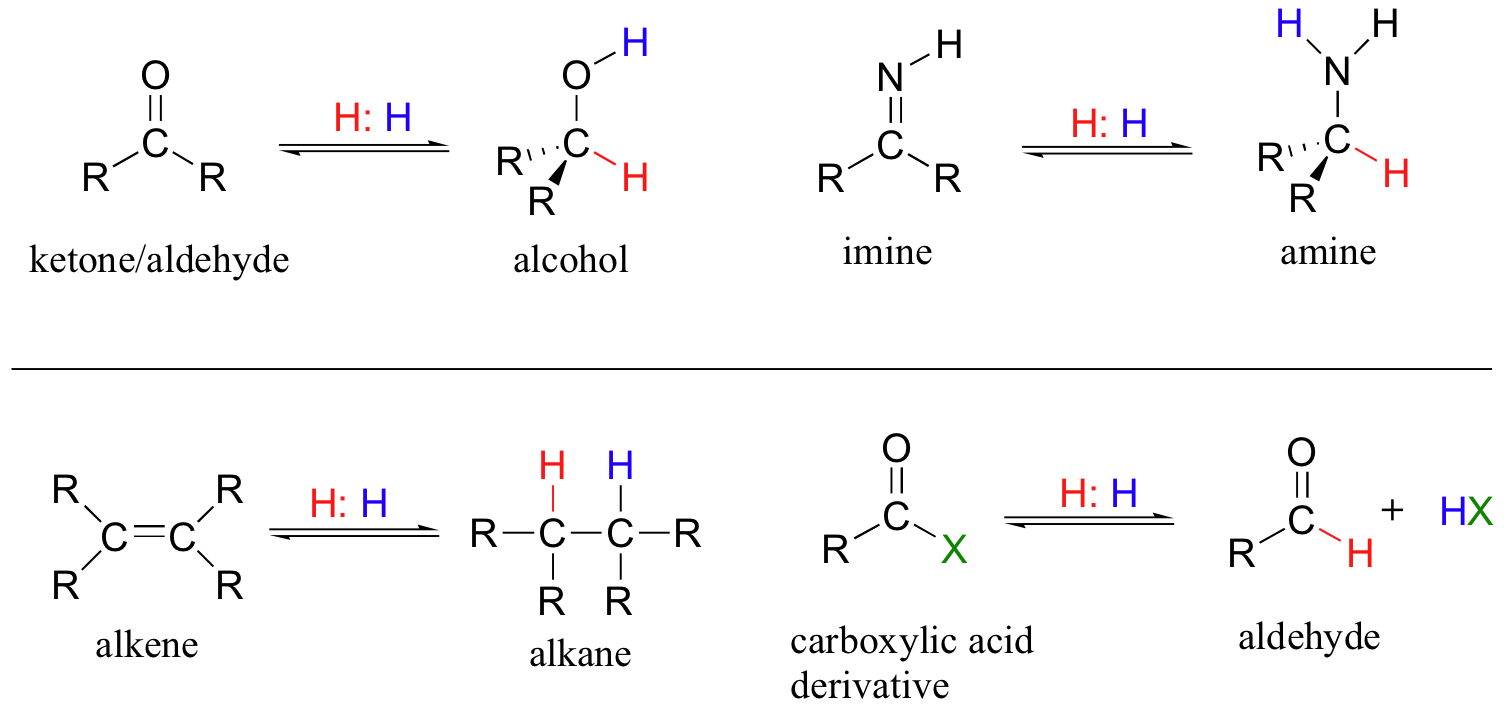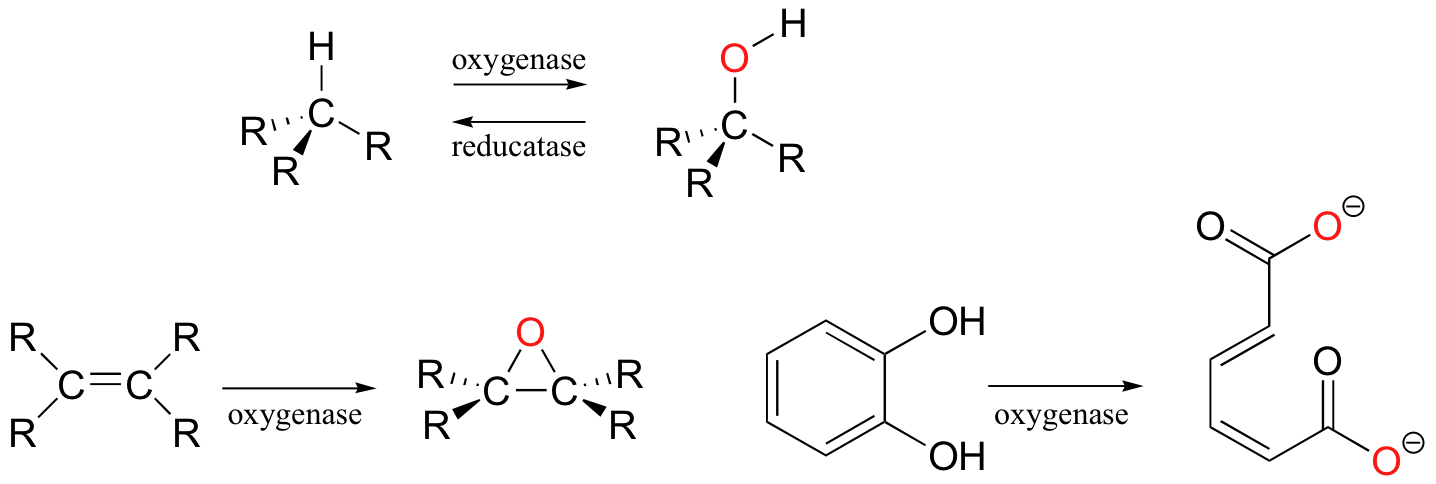16.1: Prefix
- Page ID
- 2439
In this chapter, we will examine for the first time in detail those reactions that involve the oxidation and reduction of organic compounds. We will learn about how organic redox reactions can take two basic forms. In one type of redox reaction, a hydrogen molecule (in the form of hydride anion plus a proton) is transferred to or from organic compound: these are called hydrogenation and dehydrogenation reactions.

In biochemical hydrogenation/dehydrogenation reactions, a hydride ion is transferred directly between the organic substrate and one of two specialized coenzymes called nicotinamide adenine dinucleotide and flavin adenine dinucleotide.
In the second general type of organic redox reaction, one or more heteroatoms (usually oxygen) is inserted into or removed from an organic substrate. These reactions are catalyzed by two broad classes of enzymes that are generally referred to as oxygenases and reductases, respectively.

Oxygenase/reductase reactions are mechanistically quite different from hydrogenation/dehydrogenation reactions, and often involve enzyme-bound metals and radical (one-electron) chemistry. We will see several examples of important oxygenase reactions in the central metabolic pathways, but for most of these, detailed mechanistic discussion is outside the scope of this text. Reducatase reactions will be discussed in the next chapter (section 17.3B) on free radical mechanisms.


